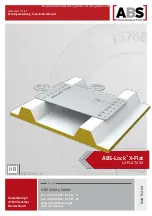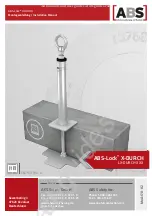
50
BG 805 981 BE (0201) QMG422.oi
The range of the electrometer preamplifier can be selected in 3 different ways:
With
amplif-MODE:AUTO
the electrometer range is set automatically across all
decades. This results in a huge dynamic response of over 10 decades or 200 dB.
Use
AUTO
whenever possible. In this way you achieve the best resolution of the
measured value and no overdriving of the amplifier can occur.
With
amplif-MODE:AUTO-D
(Auto down) the range is limited in the downward
direction. This is usefully for noisy measurement signals and can lead to faster
measurements. You can define the available dynamic response with
RANGE-L.
With
amplif-MODE:FIX
choose the measurement range with
RANGE
manually.
This allows fastest measurements with a limited dynamic response.
With Scan-
SPEED
< 10 ms/u there is only Fixrange.
For the most accurate measurements (e.g. isotope ratios) Fixrange is recommend-
ed because the mutual tolerances of the measurement ranges are eliminated or
can be calibrated.
In the following diagram of the measurement signals the raw signal
elm
(
→
55) is
represented always in
FIX
-RANGE because it is difficult to follow in
AUTO
-RANGE.
In all operating modes the measured values (except on
elm
) are multiplied times
CALIB
before they are output.
The
mass-MODE:SCAN-N
(SCAN-Normal) mode is used for recording an analog
spectrum across the range defined with
FIRST
and
WIDTH.
elm, mon, AO
sync
P
A
U
S
E
P
A
U
S
E
FI
R
S
T
WIDTH
The number of steps per mass depends on
SPEED
and the mass range (
→
12).
With
SCAN-N
the average value of the mass signal is output with each mass step.
Example: With
SPEED
100 ms/u and mass scale resolution
W
u there is an
integration time per step of 100 ms/u ×
W
u = 1.56 ms
With
SCAN-N
you obtain a direct image of the measured values captured by the
measuring amplifier or the ion counter. This mode is particularly suitable for
analyzing raw data, e.g. for optimizing parameter values.
With SCAN-F the measured values are additionally subjected to an FIR filter
algorithm (Finite Impulse Response).
elm
mon, AO
Raw signal
after FIR filter
6.9 Electrometer modes
AUTO
AUTO-D
FIX
6.10 Mass scan modes
SCAN-N
SCAN-F
















































